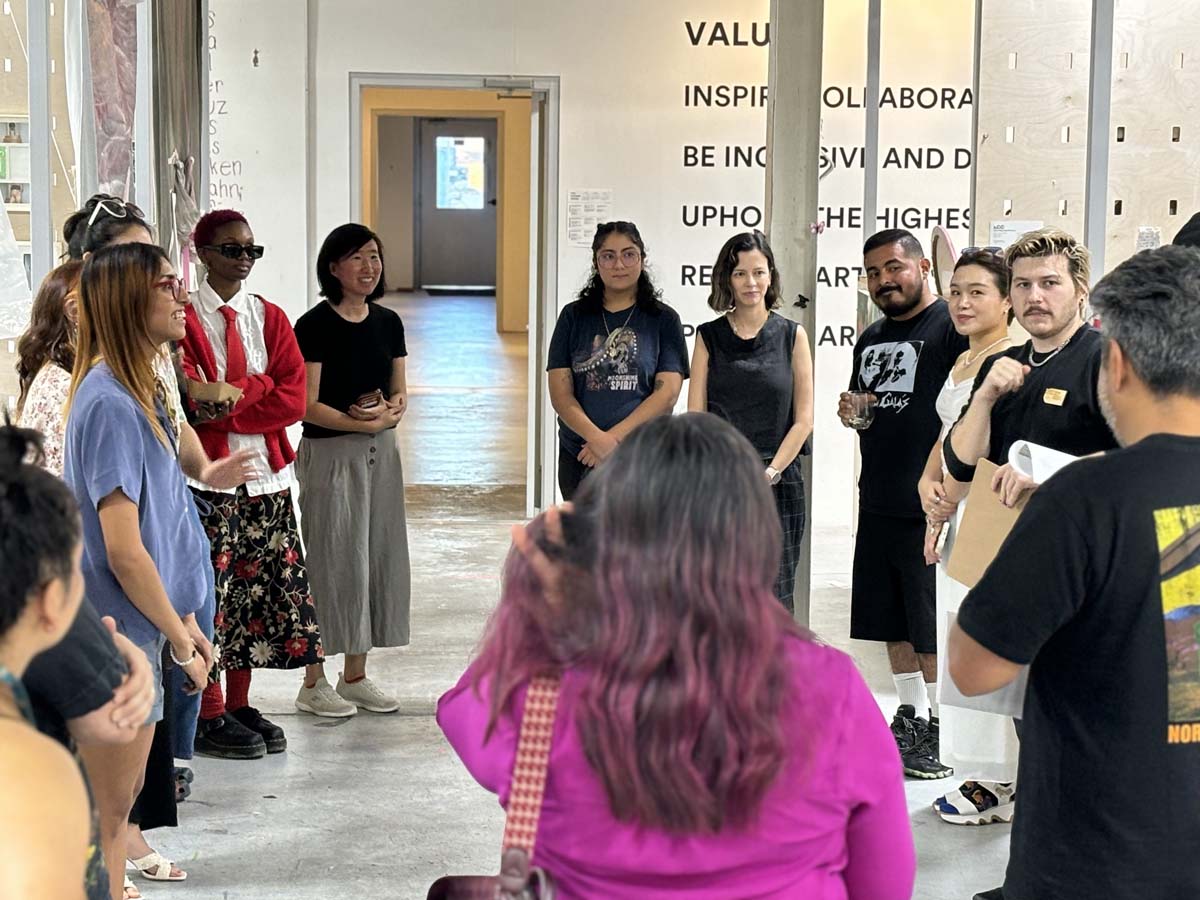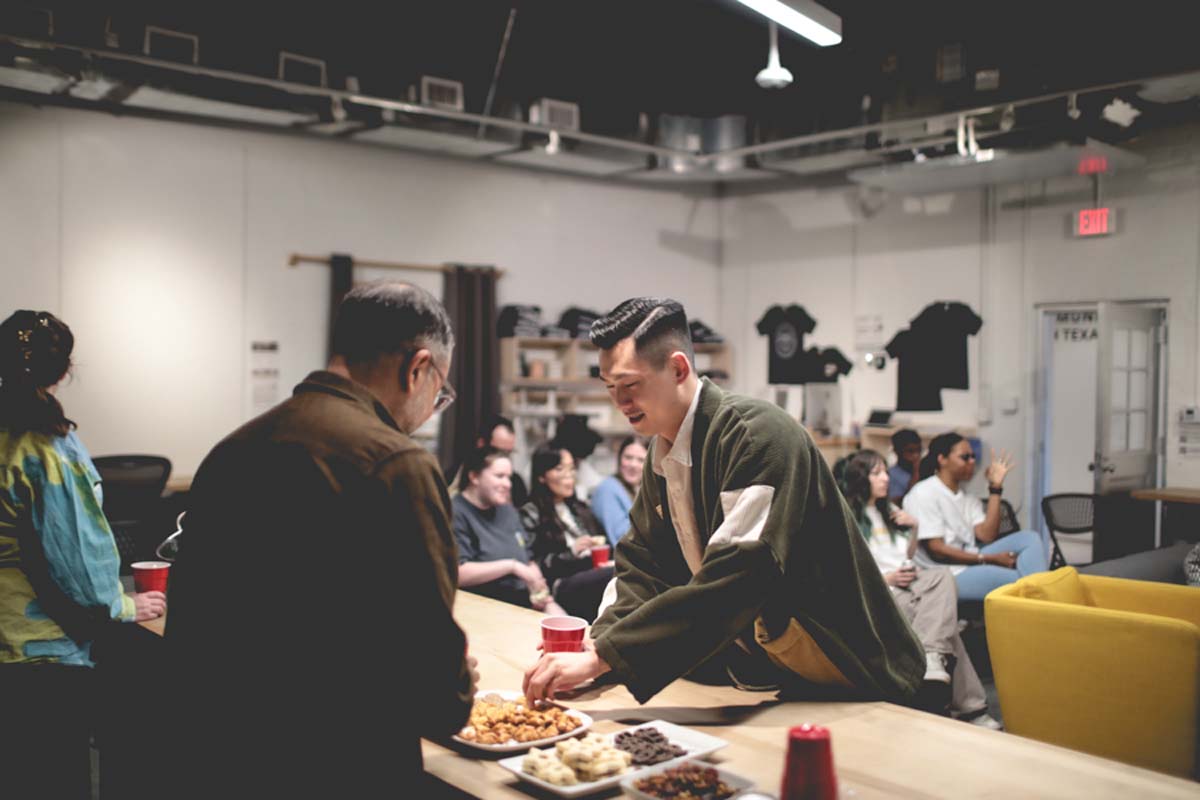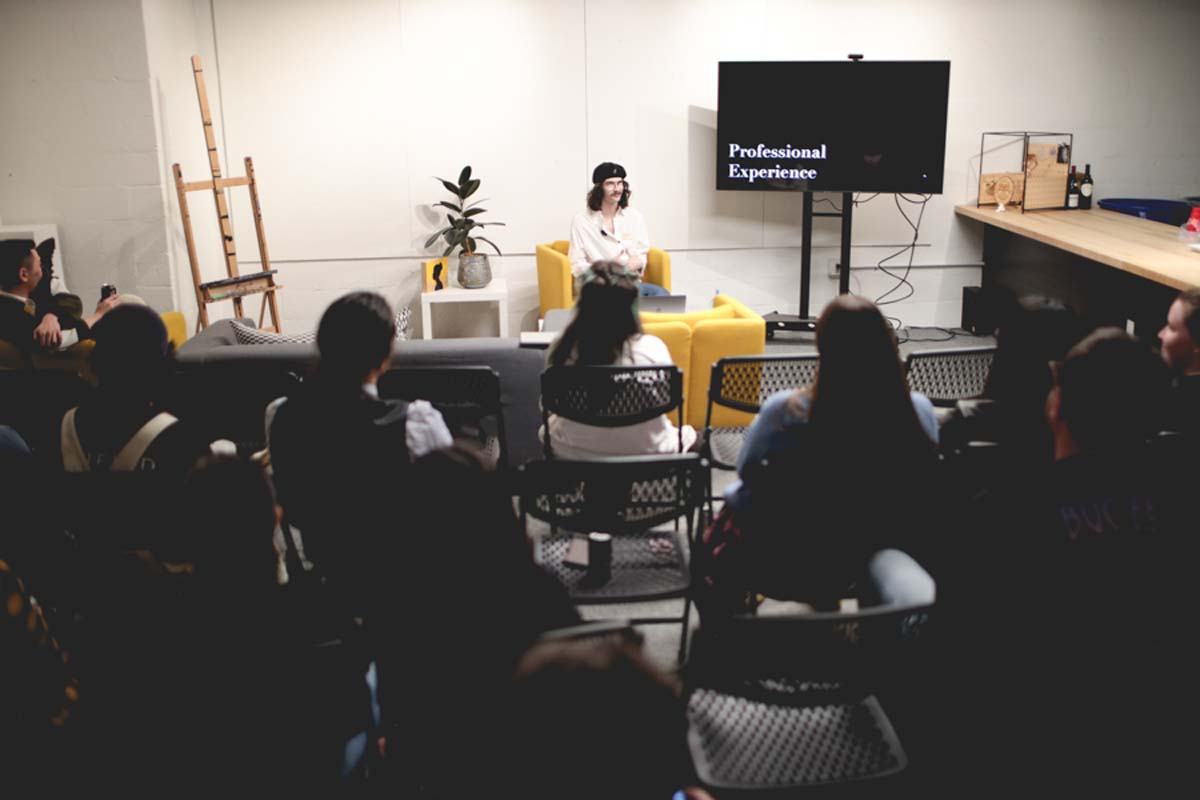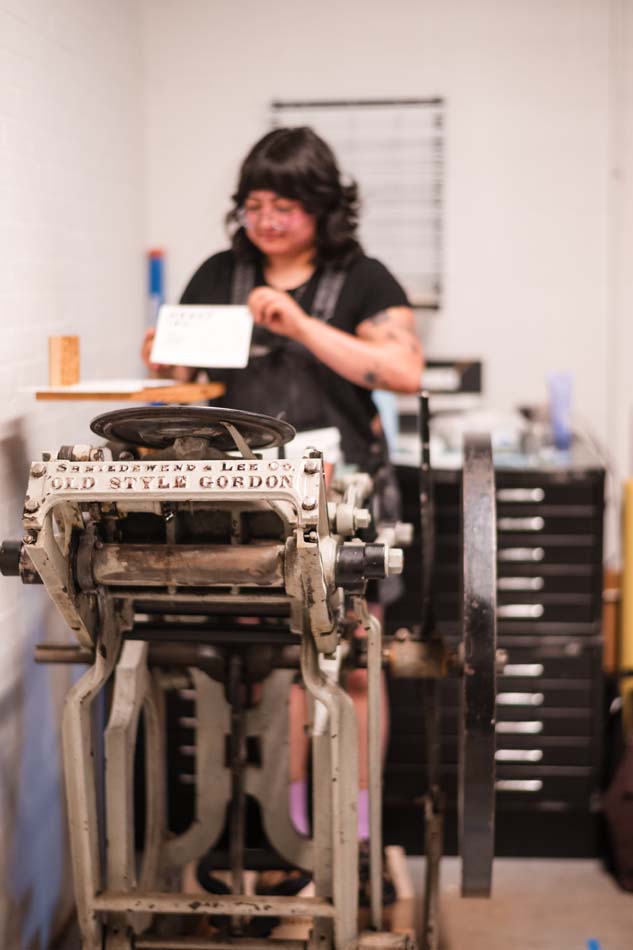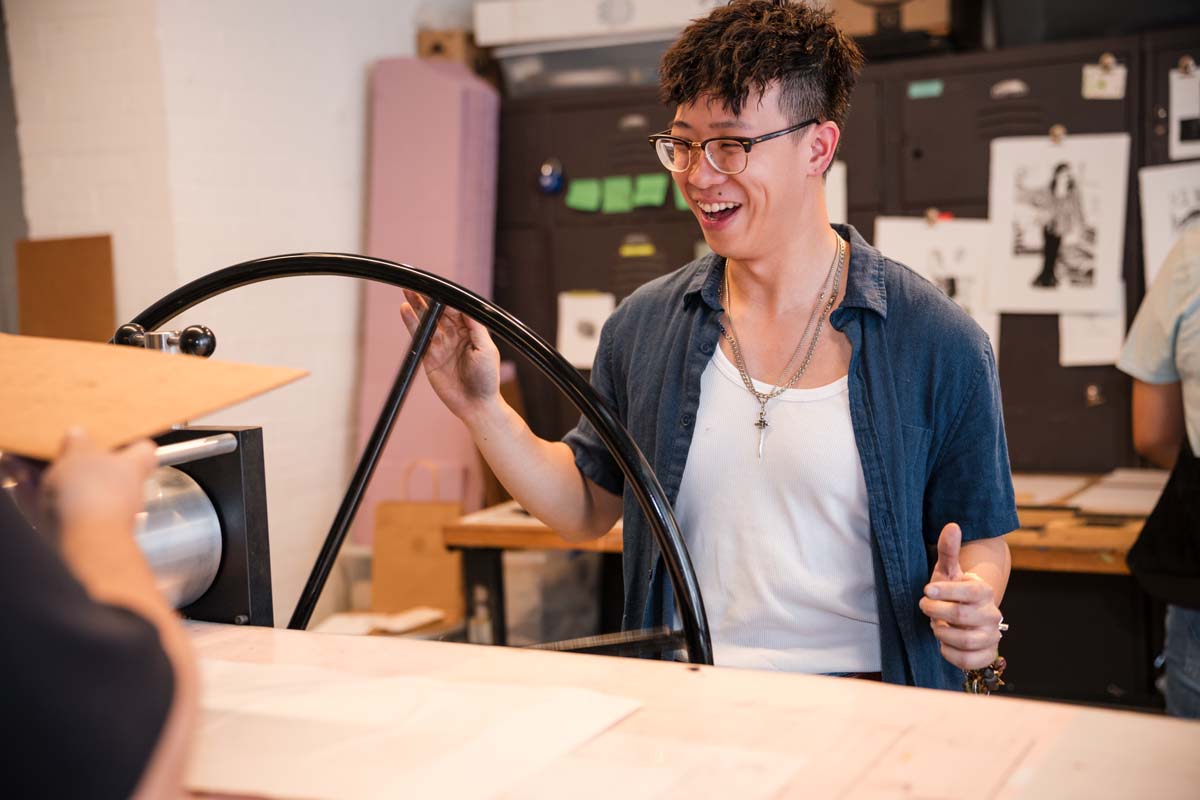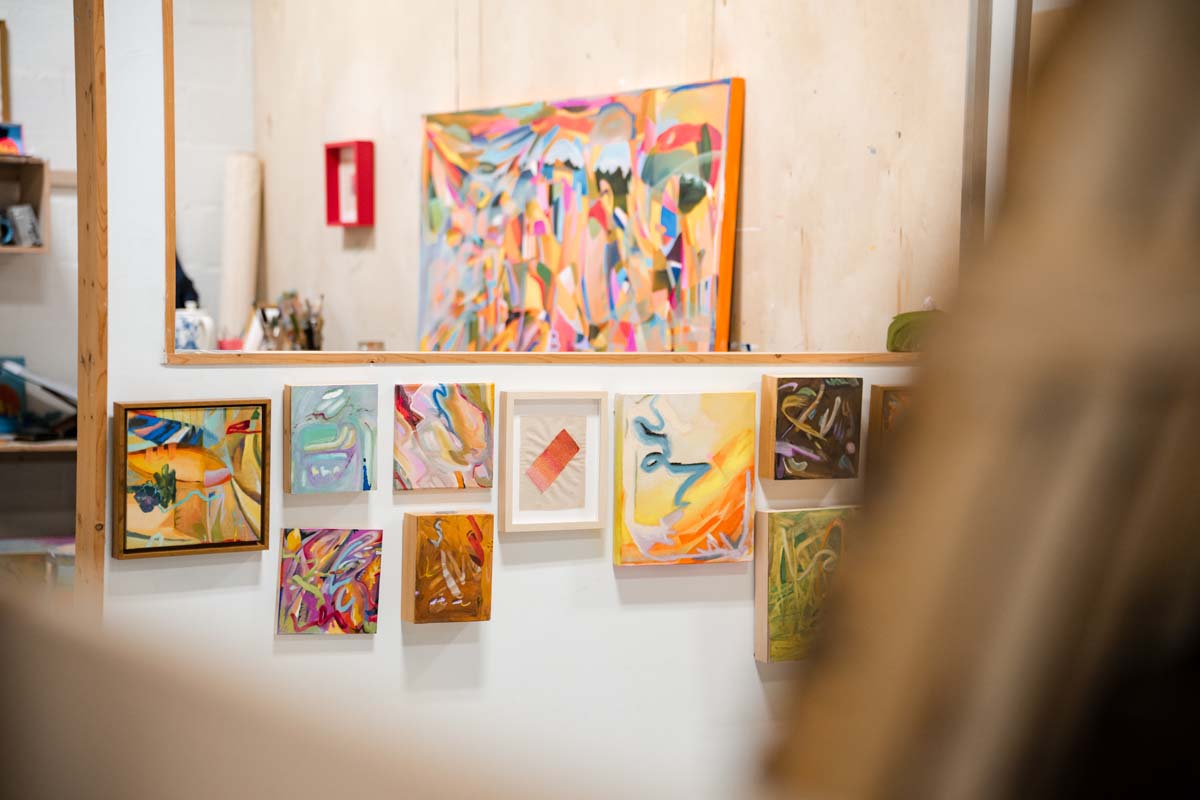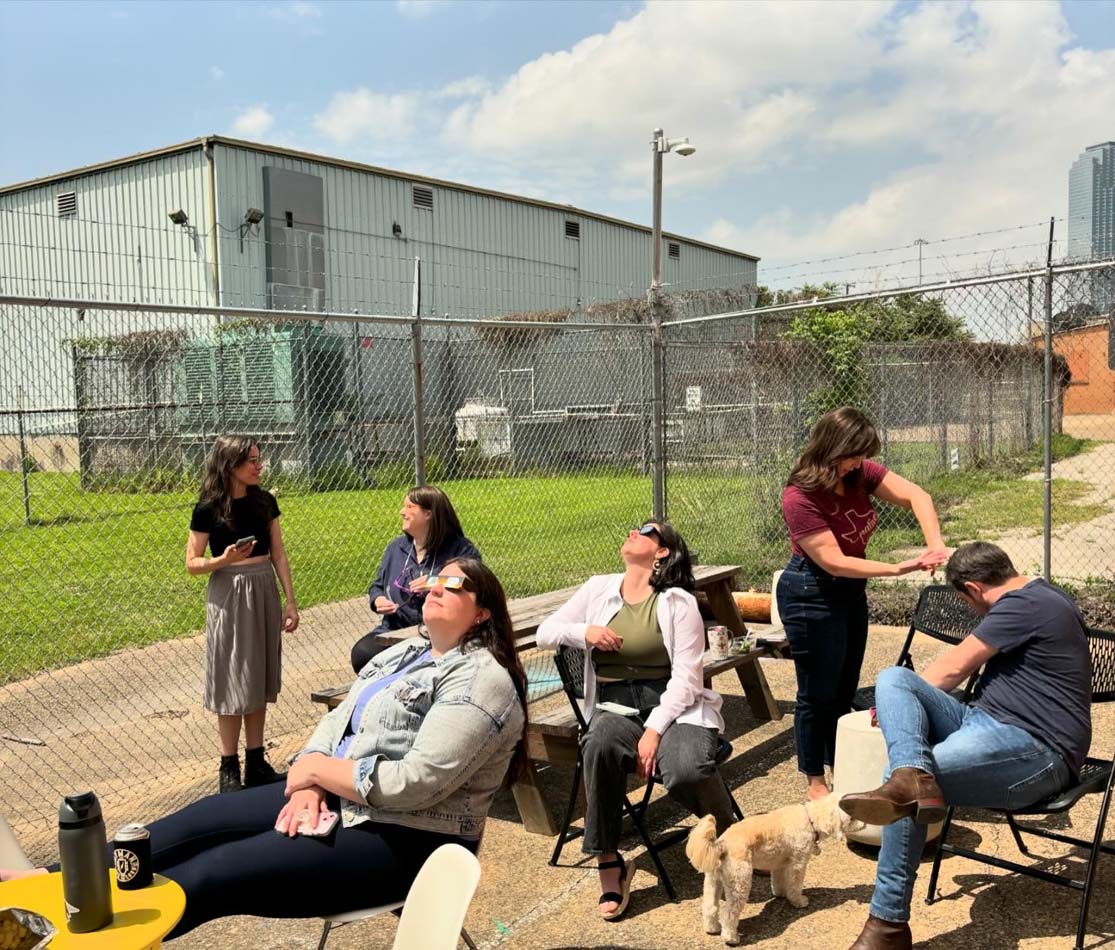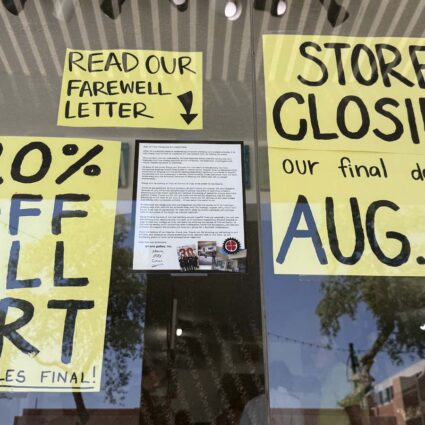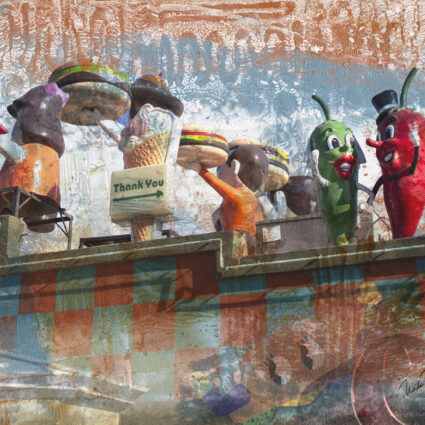By prioritizing locality and the rich diversity of its community, the Cedars Union has become a cornerstone for Dallas artists and creatives.
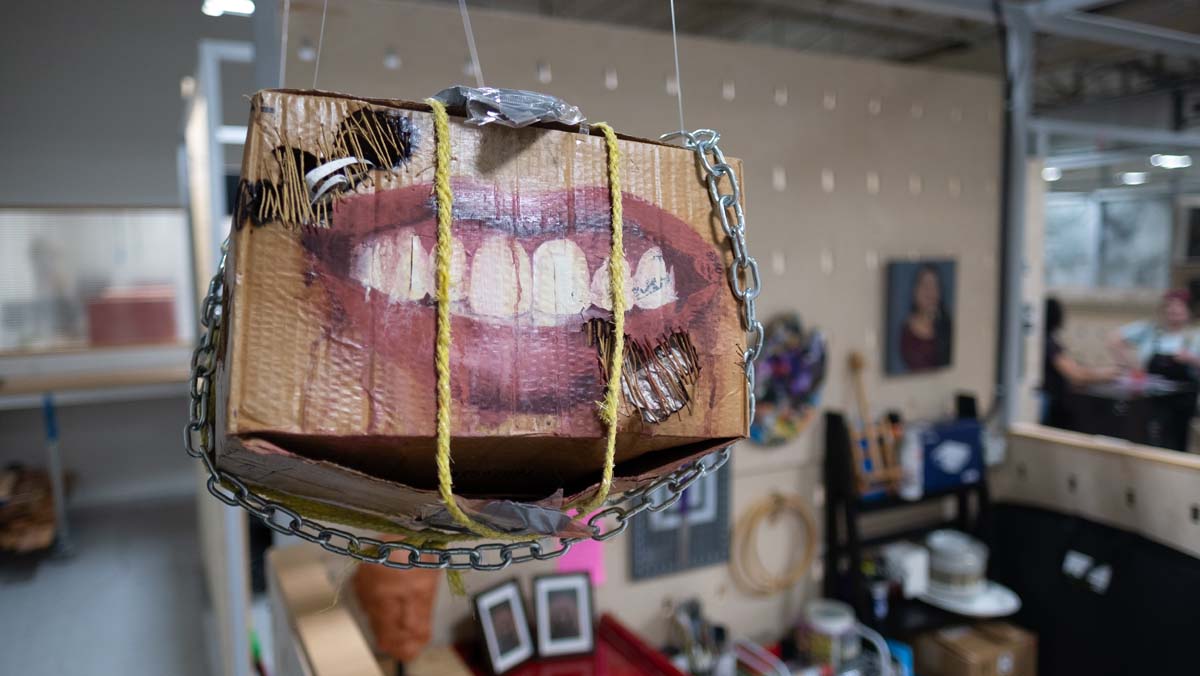
This article is part of our The Hyperlocal series, a continuation of the ideas explored in Southwest Contemporary Vol. 11.
If you’re even marginally acquainted with the art scene in North Texas, you’ll find it borderline impossible to avoid hearing mentions of the beloved Dallas nonprofit, the Cedars Union. It’s difficult to sum up the CU into a fancy one-liner; for many, it offers what you let it.
Founded in 2015 as a community workspace for artists, the organization resides in a 7,000 square-foot facility known as the Annex, which it opened in 2017. The cozy, white-walled building holds an exciting energy; as you enter, you can hear the faint buzz from a saw in the woodshop, keyboards clicking, the slice of a papercutter, conversation and laughter, background music—the telltale sounds of creatives at work.
Since it opened, the Cedars Union has successfully launched a program model that has grown from a seedling into a blossoming network of support and community within the North Texas art community. It’s a prime example of the roots that take hold when an organization prioritizes its locale.
The Cedars Union has successfully launched a program model that has grown from a seedling into a blossoming network of support and community within the North Texas art community.
“The CU is intentionally designed to foster community through shared resources, programming, and purpose-built spaces,” says development and marketing manager Cat Rigdon. For a monthly fee, the CU offers various studio spaces, shared facilities (ranging from printing presses, sewing machines, photography, videography, and audio equipment to 3D printers, vinyl cutters, computer software, and a full woodshop), professional resources and trainings, studio workshops, and community critiques, to name a few.
But perhaps their most celebrated program is the Studio Artist Incubator. The eighteen-month-long incubator program is awarded to between fourteen and eighteen North Texas–based artists per cycle, providing them a personal studio workspace, resources, mentorship, and a tight-knit cohort of peers.
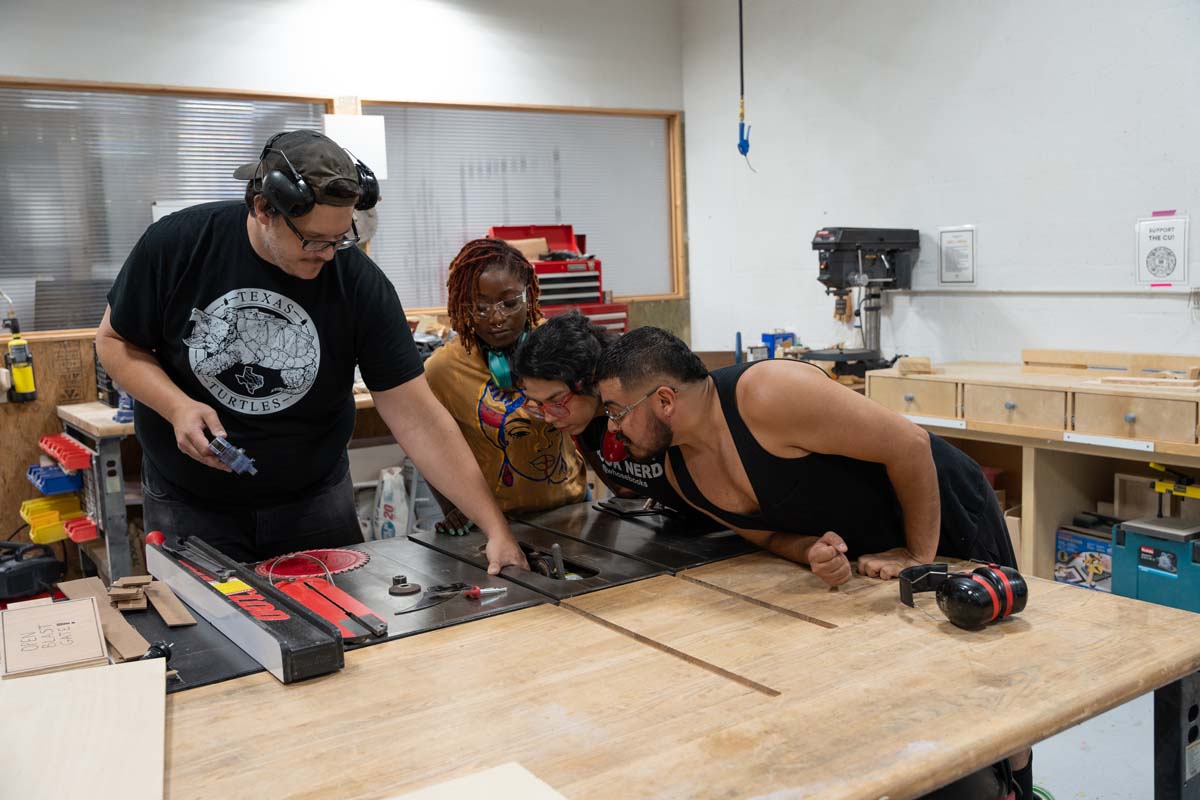
The program is diverse in both its artists and the jury who selects them. “We bring in a wide range of jurors who reflect the cultural and artistic landscape of North Texas,” Rigdon informs me. “That intentional approach helps us build cohorts that mirror the richness of our region.” As a result, within each cohort there are artists from all walks of life; some have more traditional backgrounds and formal educations while others are self-taught. You’ll find avant-garde photographers alongside graffiti artists, oil painters breaking bread with carpenters, animators comparing notes with performance artists.
“I kind of joke that it was my second grad school experience because I was just constantly learning, but a key difference is that we were all at different stages in our career and education,” says Laura J. Lawson, interdisciplinary artist and member of Cohort I in 2018. “Some people in my cohort were full-time artists, others were teachers or bartenders. There were artists I could look up to—Riley Holloway, Jeremy Biggers, Carmen Menza—and there were those I considered my peers.”
This hodgepodge medley of creatives is one of the reasons the program has found success. By removing the social barriers that separate artists of different levels and backgrounds (quite literally—the studios have no doors and low walls), the CU facilitates genuine and organic diversity within and outside of its walls. Its model subtly dismantles the underlying hierarchy that so often molds the art world into a homogenous byproduct, instead encouraging the members of the cohort to see, challenge, and learn from each other.
At the end of the eighteen-month incubator, many cohort artists emerge at a wholly different place in their career through gallery representation, exhibition and residency opportunities, and an overall stronger network. For some, it results in a shift in their practice altogether. Such is the case for Cohort IV (2023-2025) artist Christina Hahn, a multidisciplinary artist and independent curator who describes her CU experience as “life changing.”
Hahn recalls showing multiple mentors and professionals her multi-disciplinary body of work, seeking advice on which medium to pursue further, and was shocked when the overwhelming feedback pointed to her video work. “They told me I was a director and encouraged me to keep pushing my video work, which was exciting but difficult because I don’t have much technical expertise,” reflects Hahn. “But because of this encouragement I directed an experimental short for the first time and it got accepted into Aurora Video Art Night Festival and Oak Cliff Film Festival. I came into CU as a painter and a soft sculpture fiber artist and I left as a filmmaker.”
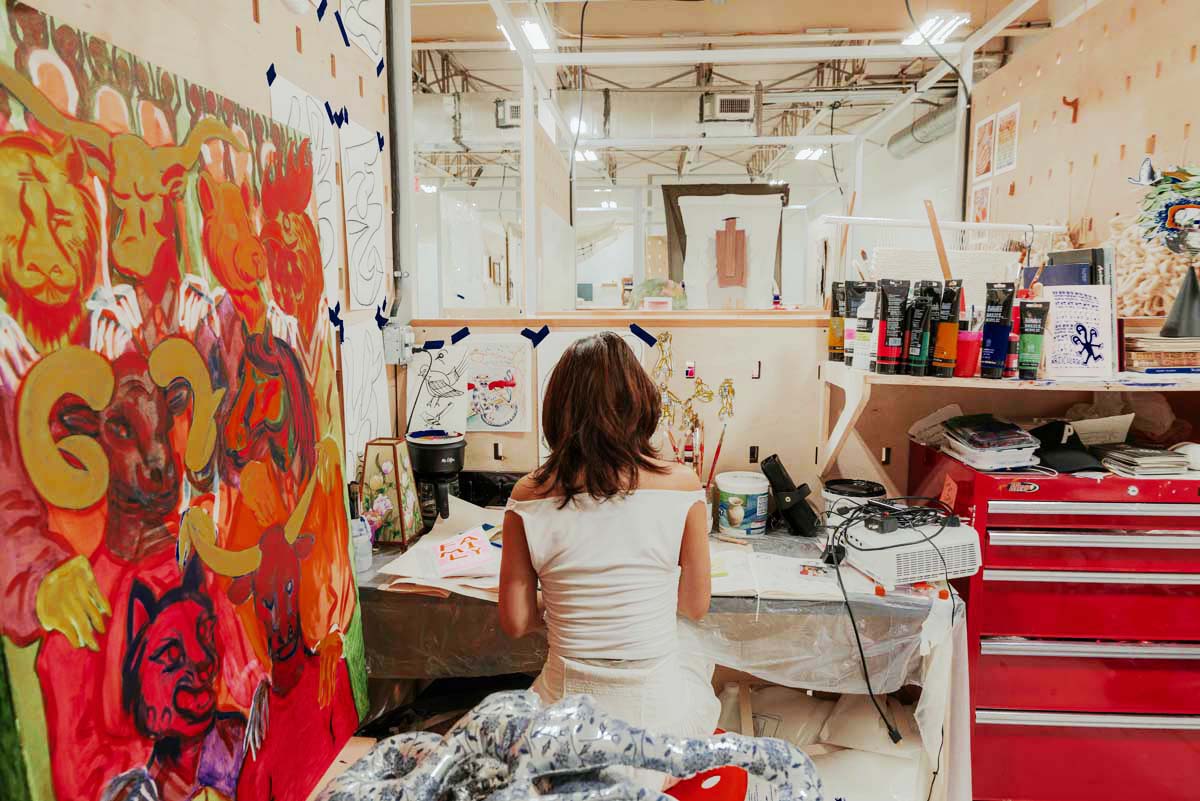
Hahn also expressed amazement at the professional development resources that the CU offered. A notable part of their programming involves calling on members of the community, from curators to collectors to arts professionals, to share their wealth of knowledge. Each month features a diverse array of opportunities: workshops on how to write an artist bio and CV, roundtable discussions with leaders of local art organizations, field trips to local institutions, community art critiques. As the creative director of the Dallas Asian American Historical Society and the founder of the Dallas Asian American Art Collective, Hahn recognized the value in this type of expertise, oftentimes passing down this information within her community and organizations, encouraging them to attend workshops and learn how to build sustainable careers in the arts. “The Cedars Union was a place where I built bridges,” she states.
The CU’s most recent cohort, Cohort V, which began in spring 2025 and runs through summer 2026, strayed slightly from the traditional visual arts incubator program by accepting two art writers and poets into the cohort: Harrison Blake and Chukwudi Ukonne. Blake expressed their surprise and gratitude in being able to have a writing space other than their couch or the imitation mid-century desk next to their cat’s litter box in their shared apartment. “It seemed to me a sign that the visual arts community in DFW was coming around to a more holistic view of artist support,” says Blake.
It’s important to be hyperlocal because we understand the cultural tapestry of our community and can plan a better vision for the future.
The CU’s keen ability to keep their finger on the pulse and recognize the need for more art writing opportunities in the area will undoubtedly enrich the program even further. “I’m really looking forward to bringing the underbelly of DFW writing into the visual art realm,” states Blake. Although Cohort V is still in its infancy, Blake already has big plans to publish a literary journal featuring poetry talent from the area.
Recently, the CU has set its sights on a new home base: the 43,000-square-foot historic Boedeker Building, located just steps from the Annex. Although they are in the early stages of their capital campaign, relying heavily on grants and donations, the CU is hopeful about how this new space will enrich their organization and the community along with it, creating affordable work space for potentially hundreds more artists to make and connect.
Nearing the end of each incubator program, the cohort organizes a group exhibition, offsite until they can move into the new building, titled Hyperlocal—its very title underscoring the vitalness of locality. The community that is built at the CU creates a ripple effect as Cohort alumni continue to teach CU workshops, attend open studios, and support the new generation.
“Artists should be community leaders,” says Hahn, “which is why it’s important to be hyperlocal because we understand the cultural tapestry of our community and can plan a better vision for the future.”
